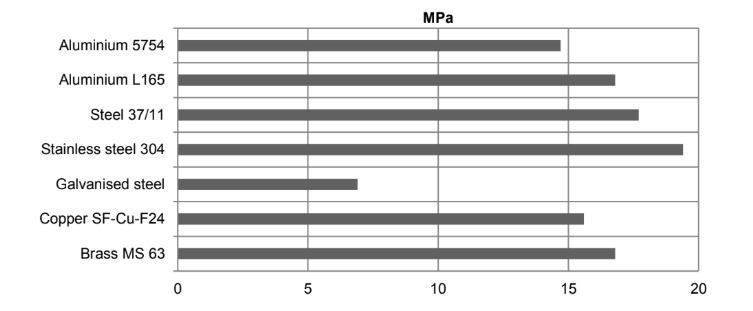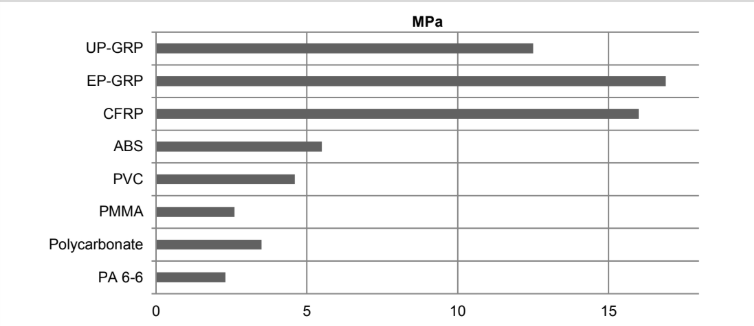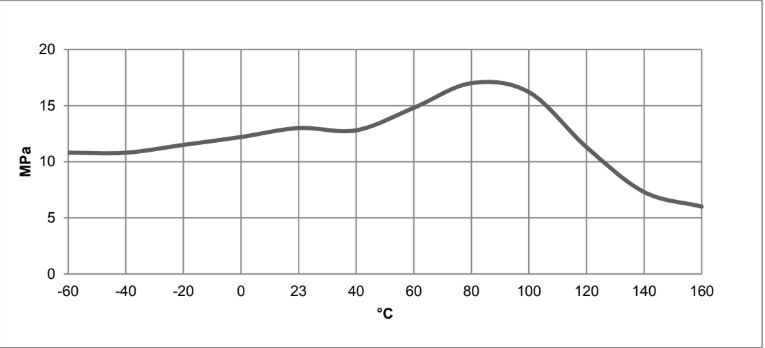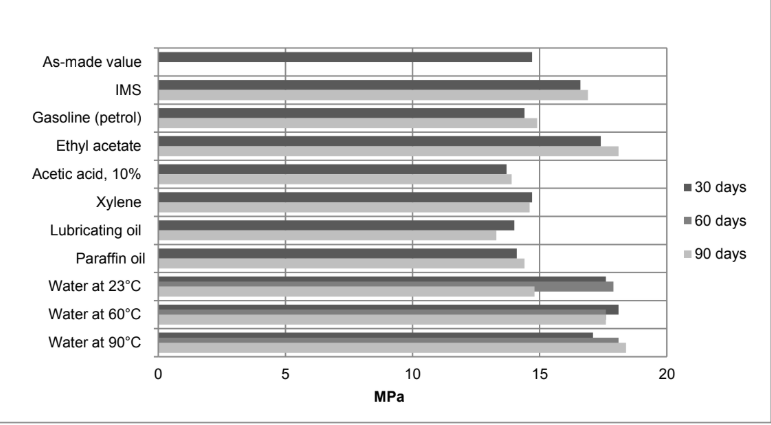Enhanced TDS
Identification & Functionality
Features & Benefits
- Ready-to-Use Product Features
- Product Features
- Excellent chemical resistance
- Temperature resistant to 140°C
- Thixotropic, gap-filling paste
- Outstanding chemical resistance
- Excellent performance in elevated temperatures
Applications & Uses
- Application Area
- Compatible Substrates & Surfaces
- Product Applications
- Bonding electrical motors and transformers
- Multi-material bonding: metals, ceramics, rigid plastics
- Aggressive operating conditions
Properties
- Physical Form
- Typical cured properties
The data shown below is provided solely as technical information and do not constitute a product specification. Unless otherwise stated, the figures shown below were determined by testing standard specimens made by lap-jointing 114 x 25 x 1.6 mm strips of aluminium alloy. The bond area was 12.5 x 25 mm, with bonded specimens cured under light clamping pressure. Lap shear testing was carried out at 23°C at 10mm/min unless indicated otherwise.
Average lap shear strengths of typical metal-to-metal joints (ISO 4587; typical average values)
Cured for 16 hours at 40°C, tested at 23°C. Pretreatment: sandblast + degrease (galvanised steel: degrease only).
Average lap shear strengths of typical plastic-to-plastic joints (ISO 4587; typical average values)
Cured for 16 hours at 40°C and tested at 23°C. Pretreatment: light abrasion + degrease.
Lap shear strength versus temperature (ISO 4587; typical average values)
Aluminium 5754, cured 16 hours at 40°C. Pretreatment: sandblast + degrease
DMA (Dynamic Mechanical Analysis ISO 6721; typical average values)
Tg midpoint 73°C Shear modulus -40°C 2613 MPa Shear Modulus 23°C 2086 MPa Shear Modulus 50°C 1652 MPa Shear Modulus 75°C 81 MPa Shear Modulus 100°C 57 MPa Shear Modulus 125°C 41 MPa Tensile Properties (ISO 527; typical average values) Cure 16 hours at 40°C, tested at 23°C
Tensile modulus 4600 MPa Tensile strength 40 MPa Elongation at break 1.0 %
Lap shear strength versus immersion in various media (ISO 4587; typical average values)
Aluminium 5754, cured 16 hours at 40°C and tested at 23°C. Pretreatment: sandblast + degrease
Lap shear strength versus tropical weathering (DIN 50015; typical average values)
Aluminium 5754, cured 16 hours at 40°C and tested at 23°C. Pretreatment: sandblast + degrease
Tropical weathering: 40°C, 92% relative humidity
Lap shear strength versus heat ageing at 70°C (ISO 4587; typical average values)
Aluminium 5754, cured 16 hours at 40°C and tested at 23°C. Pretreatment: sandblast + degrease
Lap shear strength versus cataplasma ageing (ISO 9142 E2; typical average values)
Aluminium 5754, cured 16 hours at 40°C and tested at 23°C. Pretreatment: sandblast + degrease
Technical Details & Test Data
- Processing Conditions
- Pretreatment: The strength and durability of a bonded joint are dependent on proper pretreatment of the surfaces to be bonded. At the very least, joint surfaces should be cleaned with a good degreasing agent such as methoxy propanol, acetone or other proprietary degreasing agents to remove all traces of oil, grease and dirt. Low grade alcohol, gasoline (petrol) or paint thinners should never be used. The strongest and most durable joints are obtained by either mechanically abrading or chemically etching (“pickling”) the degreased surfaces. Abrading should be followed by a second de-greasing treatment.
- Application of adhesive: The resin/hardener mix may be applied manually or robotically to the pretreated surfaces for bonding. Huntsman's technical support group can advise further on surface pre-treatments and for suitable application methods and dis- pensing equipment. A layer of adhesive 0.1 to 0.30 mm thick will normally impart the greatest lap shear strength to the joint. Proper adhesive joint design is also critical to produce a durable bond. The bonded components should be assembled and held in a fixed position as soon as the adhesive has been applied, at least until the handling strength is reached (handling strength considered as 1MPa lap shear strength – see table below).
Temperature (°C)
10 15 23 40 60 100 Time to reach a LSS of 1 MPa (hours) 14 8 5 1 - - Time to reach a LSS of 1 MPa (minutes) - - - - 14 2 Time to reach a LSS of 10 MPa (hours) 22 14 7 1.5 - - Time to reach a LSS of 10 MPa (minutes) - - - - 22 3 - Equipment maintenance: Tools should be cleaned using a suitable solvent, such as methoxy propanol or acetone, before adhesive residues have had time to cure. Removal of cured residues with solvents is not possible, and mechanical abrasion must be used. If solvents are used for cleaning, operatives should take the appropriate precautions and, in addition, avoid skin and eye contact.
Safety & Health
- Handling Precautions
Our products are generally quite harmless to handle provided that certain precautions normally taken when handling chemicals are observed. The uncured materials must not, for instance, be allowed to come into contact with foodstuffs or food utensils, and measures should be taken to prevent the uncured materials from coming in contact with the skin, since people with particularly sensitive skin may be affected. The wearing of impervious rubber or plastic gloves will normally be necessary; likewise the use of eye protection. The skin should be thoroughly cleansed at the end of each working period by washing with soap and warm water. The use of solvents is to be avoided. Disposable paper - not cloth towels - should be used to dry the skin. Adequate ventilation of the working area is recommended.
Storage & Handling
- Storage Conditions
ARALDITE® AV 138 M-2 and Hardener HV 998-1 should be stored at room temperature in the original sealed con- tainers, kept in a dry place protected from extremes of temperature and strong sunlight. The expiry date is indicated on the individual container labels.
Other
- Appearance
- Grey paste
- Application Information
Value Units Test Method / Conditions Fixture Time 5.0 h h Mix Ratio 40:100 pbw pbw - Mechanical Properties
Value Units Test Method / Conditions Tensile Strength 40.0 MPa MPa - Physical Properties
Value Units Test Method / Conditions Specific Gravity approx. 1.7 -
